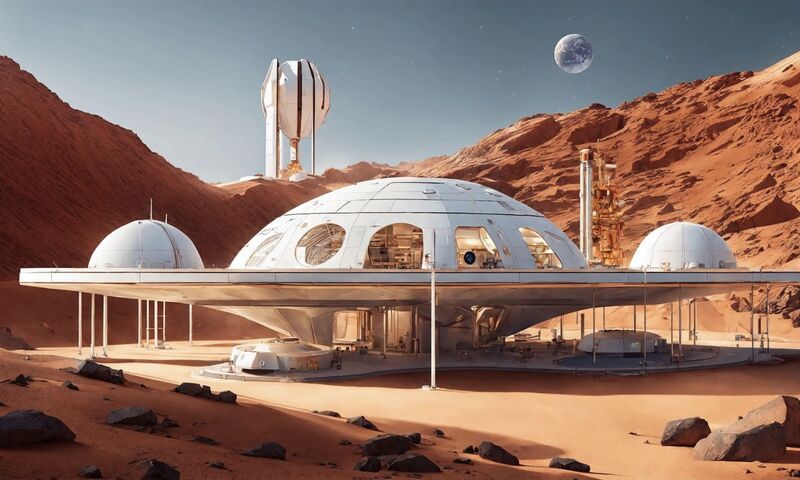Space Exploration 2.0
AI is significantly advancing space exploration, addressing challenges of long communication delays, massive data volumes, and enabling autonomous exploration. Its application spans across processing vast data from space instruments, enhancing autonomous robotic exploration, and supporting astronaut health.
Space instruments, including satellites and telescopes, generate data at volumes impossible for manual analysis. AI steps in to manage this deluge, classifying and processing image streams, sensor readings, and spectral data efficiently. For instance, NASA’s Mars Reconnaissance Orbiter uses AI to sift through its data stream, with algorithms trained to recognize important Martian surface features.
Similarly, AI has played a pivotal role in analyzing data from the Kepler space telescope, identifying exoplanets through light curve analysis. Collaborations like NASA and Google have led to the discovery of overlooked exoplanets such as Kepler-90i and Kepler-80g. Moreover, AI applied to the Gaia space telescope data unearthed 2,000 protostars, significantly more than what was previously identified, demonstrating AI's potential in transforming celestial data analysis for future missions targeting extraterrestrial life signs.
AI significantly contributes to the autonomy of planetary exploration robots, handling vision-based navigation, path planning, and adaptive mission prioritization. NASA's rovers, Curiosity and Perseverance, employ AI for terrain mapping and feature identification, enabling efficient exploration and scientific inquiry on Mars.
Such autonomy is crucial for missions to more distant or less accessible celestial bodies, where real-time human direction is impractical. AI's role extends to critical phases like entry, descent, and landing (EDL), aiding in trajectory corrections to ensure accurate probe landings on Mars by comparing sensor data against detailed surface maps.
Long-duration space missions pose significant risks to astronaut health, requiring advanced support systems where AI shows promising potential. Integrating data from various sensors allows for predictive health analytics, offering personalized healthcare solutions. Notably, the Crew Interactive Mobile Companion (CIMON) introduced by Airbus, IBM, and the German Aerospace Center is a voice-controlled AI robot deployed on the International Space Station (ISS). It assists with tasks, documents experiments, and provides psychological support through voice and facial recognition.
Future applications envisage AI virtual assistants aiding astronauts during Mars missions, addressing the psychological challenges posed by isolation and delayed communications with Earth.
As we continue to explore the cosmos, AI's adaptability and learning capabilities will be instrumental in unveiling the universe's mysteries, making it an indispensable tool in the next era of space exploration.
#ai
#digitaltransformation
#artificialintelligence
#machinelearning


